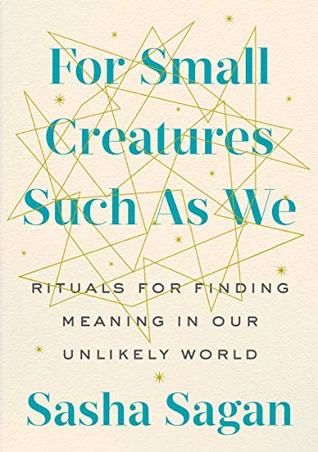More on this book
Community
Kindle Notes & Highlights
by
Sasha Sagan
Read between
November 11 - November 29, 2020
My mother’s parents met on the New York City subway. In a car of the E train during rush hour. It was 1938. My granddad Harry was reading William Faulkner’s Absalom, Absalom! and when he went to turn the page my grandmother Pearl put her hand on his and said she wasn’t finished reading.
In a world where the birth of a daughter was often seen as a burden, this ritual celebrated it, despite being rooted in grief. It was the invention of a man who once served as Piplantri’s sarpanch (a position akin to small-town mayor). His beloved daughter died very young and he wanted to honor her memory. The villagers planted many thousands of trees but worried termites would destroy them. So the villagers started planting aloe vera, which they believed would kill the pests. Soon there were millions of aloe plants in Piplantri. They didn’t know what to do with them all. But the women of the
...more
“Once a week, you must sing together,” the driver said. “Be playful and you will stay united.”
My mother and I have often thought that March 4th would be a good date for such a secular holiday. When you say it out loud, in English, it sounds like a bold command. It’s a pun that seems to cry out a directive to improve or “evolve.”
Young Yupik men in southwestern Alaska receive a tattoo of a symbol called ellam iinga, or “the eye of awareness,” upon their first kill as a hunter.
Writing is perhaps the greatest of human inventions, binding together people who never knew each other, citizens of distant epochs. Books break the shackles of time. A book is proof that humans are capable of working magic.
His light was still reaching me, through technology, through science, the summer of his life still warming me during the endless winter of his death.
Crying on your wedding day is very common, and for a wide variety of reasons. Sometimes it’s even ritualized, like for the brides of Tujia, who live in central China, where they are obliged by tradition to force themselves to cry in front of family. Like an acting student, the bride practices for weeks, sometimes years. As the big day approaches, her female relatives join in. Backed by an ancient legend, the idea is to highlight the joy of getting married by contrasting it with an opposite emotion.
Folks, I’m telling you, birthing is hard and dying is mean— so get yourself a little loving in between. —LANGSTON HUGHES
The Vietnamese Zen Master and peace activist Thich Nhat Hanh offers this: In this plate of food, I see clearly the presence of the entire universe supporting my existence.
Among devout Shintoists, there is a ritual of closing one’s eyes, bowing slightly, and, either silently or audibly, clapping in gratitude to the kami, the forces of nature, spirits, and other sacred phenomena that Aston called “their divinities.”
One day, of course, no one will remember what I remember. —DONALD HALL
One day at the Museum of Fine Arts in Boston, we happened upon the coffin of the late Mrs. Thanchvil Tarnai and her husband, Larth Tetnies. They loved each other during the fourth century BCE in present-day Vulci, Italy, a town about equidistant between Florence and Rome. And their enormous sarcophagus is sealed by a lid featuring larger-than-life versions of themselves, seemingly naked, entwined in a sheet, holding each other, staring into each other’s eyes, the very picture of two people waking up in an embrace after a night of passion. The title of their museum card reads, “Together
...more
A friend told me that when her aunt died the imam performed a Persian tradition where he theatrically, dramatically willed himself into a fit of tears, cajoling the mourners to do the same, to let out their feelings, to feel comfortable weeping for their dead. I needed something like that.
I didn’t know this then, but the Ovambo of Namibia have words for this concept. It is, as Professor Olupona wrote, “a distinction [that] exists between ‘ancestors’ and the ‘living dead.’ The former (aathithi) refers to the ‘forgotten deceased,’ those whose activities and memory cannot be recalled by the living members of their lineages. The living dead, on the other hand, are the recently deceased.”


